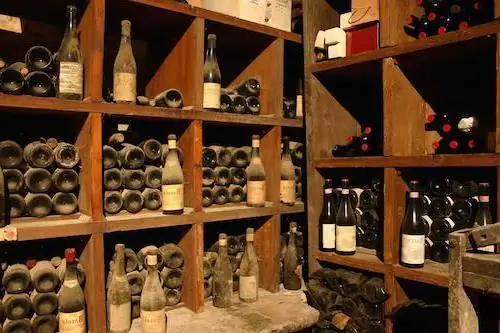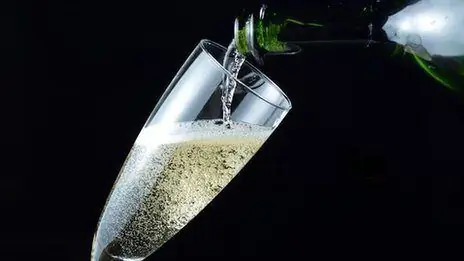2025 Author: Isabella Gilson | [email protected]. Last modified: 2025-01-23 12:50:31
How quickly everything changes in this world! Some twenty years ago, we could only read about the wines of Burgundy from the pre-revolutionary classics. Now, in any large supermarket or restaurant there is a fairly large selection of these world-famous drinks. True, during the decades of Soviet power in Russia, cultural traditions associated with French wines were lost. Therefore, now their inquisitive fans have to fill in the knowledge gaps in this area themselves.
Not a wine region at all
Burgundy, the historical region of France, the world owes a lot. Indeed, photography, cinematography, reading heads of CDs were invented here, Gustav Eiffel was born here. Gourmets appreciate Burgundy for Dijon mustard, gingerbread, Creme de Cassis liqueur and, of course, first-class wines.
Although in all respects, this geographical region, it would seem, is completely unsuitable for winemaking. However, according to Denis Du Bordieu, professor of oenology, it is at the border between cold and warm climates that great wines emerge. And Burgundy in this respect can be considered illustrativeexample.

Soil-climatic factors and weather conditions of the region constantly challenge local winemakers. Some of them even have to use heat generators in their vineyards. Thus, Burgundy wines are the result of selfless work and love of local residents for their land.
Glorious traditions
Despite the difficult climatic conditions, winemaking has been practiced in Burgundy for a long time. A significant role in the development of this branch of agriculture was made by the abbeys of the Benedictines and Cistercians. In the Middle Ages, the monks not only bred some of the now known grape varieties, but also developed many winemaking techniques. In other words, Burgundy owes much of its worldwide fame to the inventive holy fathers.
For a long time, the products of local winemakers were supplied only to the French market. It began to be imported in small quantities only a few centuries ago. Burgundy wine first came to Russia in the 16th century. and was called "Romanea".
Modern production
Today the winemaking capital of the region is the city of Beaune. Burgundy itself cannot be called a major producer of alcoholic beverages. Only 3% of French commercial wines are produced here. At the same time, 70% of the crop harvested by 4,200 producers is bottled by 150 merchants.
Wine estates are called “proprietes” or “domains”. If the vineyard is owned by one owner, then the Monopole designation can be found on the label of the wine.

Burgundy is Europe's northernmost region producing decent red wines. The main grape varieties used to make both red and white wine are as follows:
- Pinot Noir.
- Chardonnay.
- Game.
- "Aligote".
- Sauvignon Blanc.
Organization of the great wines of Burgundy
The first classification of the region was carried out in 1861. However, after the introduction of a nationwide system of appellations in 1935, the systematization of Burgundy wines was changed. Appellation refers to the geographical area where the grapes were grown, as well as the established rules for wine production.
Today, the best vineyards in the region are called "Grand Cru" and "Premier Cru". They are followed by regional or communal appellations. Sparkling Burgundy wines have their own name - Cremant de Bourgogne.
The most famous regional appellations, where about 64% of all Burgundy wines are produced, are:
- Bourgogne Aligote.
- Macon Villages.
- Coteaux Bourguignons.

Burgundy has several major wine sub-regions:
- Chablis and Grand Auxerrois.
- Cote de Beaune.
- Cote de Nuits.
- Chatillon.
- Makone.
- Chalonnaise Cat and Coshua.
This is where most of the best Burgundy wines are produced, which we will get to know below.
Chablis
This sub-region is probably the most famous inRussia since the 18th century. Usually dry wines are produced here, with characteristic mineral tones, since the soils of Chablis are rich in limestone. Four appellations produce 23% of all Burgundy wines:

- Petit Chablis is best enjoyed two years after harvest as an aperitif.
- The wines of the Chablis appellation are recommended to drink after 2-3 years. They go great with almost all dishes.
- The top 40 premier cru sites in Chablis grow grapes that are then used to produce wine best suited for fish or seafood salads.
- And finally, the Chablis grand cru appellation, where the most expensive alcoholic drinks of the region are produced. So, at the Stockholm auction in 2011, 12 bottles of Chablis Le Clo Grand Cru vintage 1983 were sold for 3 thousand dollars.
For wines from Chablis, the harvest year is of great importance. According to experts, the best vintages in this regard are 2002, 2005 and 2010.
Cote de Beaune
Wines produced in this sub-region are exported to many countries. For example, "Montrachet" with a slight nutty flavor is considered, and not without reason, one of the best in the world. It was appreciated by Thomas Jefferson and Alexandre Dumas, and today a case of this white wine from Burgundy (vintage 1990) was sold at Sotheby's for $62,000.
The thriving commune of Meursault cultivates mainly the Chardonnay grape variety. Wines have been produced here since Christmas 1098, that is, almost a thousand years. Oenologists, experts inareas of winemaking give them an unexpected characteristic: buttery, meaty and rich in flavour.
In addition to white wines, the Côte de Beaune sub-region also produces red wines. The Pommard appellation is known for strong, structured Pinot Noir wines. On the contrary, the Volnay appellation produces elegant, refined alcoholic drinks from it.

Cote de Nuits
13% of Burgundy wines are bottled here. They are distinguished by deep color and delicate taste. Wines from Côte de Nuits were loved by Napoleon Bonaparte and Charles de Gaulle. Even relatively young drinks from this region cause a stir among connoisseurs. For example, in 2012, six bottles of the 2005 vintage were sold at Christie's for $20,000.
Despite the fact that the monopoly of La Romana is one of the smallest appellations in France, the wines produced here are considered the most expensive and rare in the world. And no wonder, because only 300 boxes are produced a year.
Neighboring Romanet-Conti is famous for the fact that once its owner was Prince de Conti, who fought for the right to own it with the Marquise de Pompadour, mistress of Louis XV. Today, the production of this monopoly vineyard is highly valued. So, in 2013, a record amount of $1.6 million was paid for the collection of Romanet-Conti wines (114 bottles).
Makone
This is the largest and at the same time the southernmost wine-growing sub-region of Burgundy. Almost 80% of its territory is occupied by vineyards of the classic Chardonnay variety. The tradition of white wine production isMakone deep roots. The first local winemakers can be considered the monks of Cluny Abbey, founded in 909.

Beaujolais
Young sparkling drink "Beaujolais" has gained a truly worldwide fame, since, since 1951, every year a holiday is held in his honor. And nowadays, at the end of November, the wine of the new crop is tasted not only in France, but also in other countries. For example, in Russia, the holiday of young wine has been officially celebrated since 1999.
Beaujolais Nouveau is a Burgundy red wine that produces approximately 40 million bottles a year. The world leaders in its consumption are, oddly enough, the Japanese. They drink about a third of the entire crop.
The popularity of Beaujolais Nouveau is natural, as the noble drink is distinguished by freshness, pleasant softness and the ability to quench thirst well.
Eno-etiquette
Professionals assure that wine should be drunk from glasses specially designed for a particular type of drink. This is how their multifaceted flavor is fully revealed.

Glasses for Burgundy wines have a volume of about 700 ml and are shaped like a large apple. Due to the wide contact area of the drink with oxygen, its various flavor notes interact as much as possible, fully revealing the aroma and exquisite taste. At the same time, the increased acidity of Burgundy wines is offset by the wide rim of the glass.
Recommended:
Famous wines of France. French wine classification

French wine is considered to be the most refined and aromatic alcoholic beverage on the planet. However, when buying, it is important to consider what grape variety it is made from, in what area, according to what traditions. Only knowledge of the classification will allow you not to make a mistake when choosing a wine and find the best
Collection wines. Collection of collection wines. Vintage collection wine

Collection wines are drinks for true connoisseurs. After all, you must admit, not everyone can understand by taste when the wine was prepared (what year the berry harvest was) and in what area. Most will simply note the incredible taste and aroma of the wine. However, it is very easy to get used to the exquisite taste, and once you try such a drink, you will want more
Crimean wines: review, producers, names, price and reviews. The best Crimean wines

Crimean wines are known far beyond the peninsula. In Crimea, there are several factories for the production of this drink, many tourists go there on excursions, participate in tasting and, of course, buy a bottle or two as a gift
Categories of wines. How are wines categorized? Classification of wines by quality categories

As they said in ancient Rome, In vino veritas, and it is impossible not to agree with this. After all, despite technological progress and the cultivation of new varieties of grapes, wine remains one of the most honest drinks. People can fake a well-known brand, but you can't fake the taste, smell and color. And how, 1000 years ago, high-quality wine can loosen the tongue of even the most laconic person
Wines "Chateau Le Grand Vostok" - a particle of French charm by the hands of Russian winemakers

This article talks about the wines of "Chateau Le Grand Vostok", their production, varieties, merits, reviews; contains basic information about the company producing this brand of alcoholic beverages

